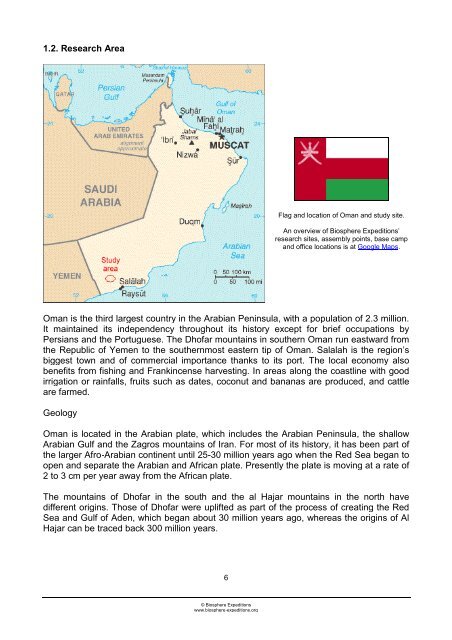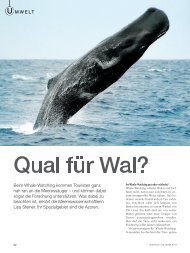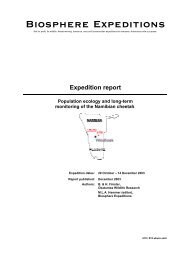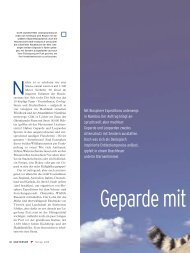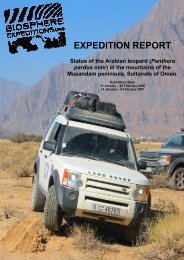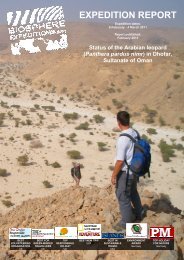EXPEDITION REPORT - Biosphere Expeditions
EXPEDITION REPORT - Biosphere Expeditions
EXPEDITION REPORT - Biosphere Expeditions
Create successful ePaper yourself
Turn your PDF publications into a flip-book with our unique Google optimized e-Paper software.
1.2. Research Area<br />
6<br />
© <strong>Biosphere</strong> <strong>Expeditions</strong><br />
www.biosphere-expeditions.org<br />
Flag and location of Oman and study site.<br />
An overview of <strong>Biosphere</strong> <strong>Expeditions</strong>’<br />
research sites, assembly points, base camp<br />
and office locations is at Google Maps.<br />
Oman is the third largest country in the Arabian Peninsula, with a population of 2.3 million.<br />
It maintained its independency throughout its history except for brief occupations by<br />
Persians and the Portuguese. The Dhofar mountains in southern Oman run eastward from<br />
the Republic of Yemen to the southernmost eastern tip of Oman. Salalah is the region’s<br />
biggest town and of commercial importance thanks to its port. The local economy also<br />
benefits from fishing and Frankincense harvesting. In areas along the coastline with good<br />
irrigation or rainfalls, fruits such as dates, coconut and bananas are produced, and cattle<br />
are farmed.<br />
Geology<br />
Oman is located in the Arabian plate, which includes the Arabian Peninsula, the shallow<br />
Arabian Gulf and the Zagros mountains of Iran. For most of its history, it has been part of<br />
the larger Afro-Arabian continent until 25-30 million years ago when the Red Sea began to<br />
open and separate the Arabian and African plate. Presently the plate is moving at a rate of<br />
2 to 3 cm per year away from the African plate.<br />
The mountains of Dhofar in the south and the al Hajar mountains in the north have<br />
different origins. Those of Dhofar were uplifted as part of the process of creating the Red<br />
Sea and Gulf of Aden, which began about 30 million years ago, whereas the origins of Al<br />
Hajar can be traced back 300 million years.


